The automotive marketplace is constantly evolving, and the competition between iconic models such as the VW Golf and the Skoda Elroq is heating up. Each vehicle brings a unique set of strengths, catering to different driver preferences. In this comparison, we will delve into technical specifications, performance metrics, and innovations that define these two remarkable vehicles. Let’s explore how they stack up against each other.
VW Golf vs Skoda Elroq – Differences & prices compared
Compare performance, boot capacity, efficiency and price at a glance.
Find out which car is the better choice for you – VW Golf or Skoda Elroq?
Body and Design
The VW Golf is a classic hatchback, known for its compact and versatile design. With dimensions measuring 4282 mm in length, 1789 mm in width, and a height of 1483 mm, it is ideal for city driving and offers a spacious interior for its class. The Golf's trunk capacity is commendable at 381 liters, providing ample space for your belongings.
On the other hand, the Skoda Elroq is recognized as a modern SUV, measuring 4488 mm in length and 1884 mm in width, with a height of 1625 mm. This adds a notable level of presence on the road, along with increased ground clearance. With a trunk capacity of up to 470 liters, the Elroq makes it easy to carry more luggage or groceries.
Powertrains and Performance
The VW Golf offers an impressive array of powertrains, catering to various driving preferences. It includes petrol and diesel engines, as well as a plug-in hybrid variant. The engines range from 116 HP to a blistering 333 HP in the performance-focused models. Notably, the Golf can achieve acceleration from 0 to 100 km/h in as little as 4.6 seconds, depending on the engine choice.
In contrast, the Skoda Elroq is an electric vehicle that focuses on sustainability without compromising on performance. It comes equipped with power options of 170 HP and 285 HP. The acceleration is quite impressive, with a 0 to 100 km/h time of just 6.6 seconds for the more powerful variant. The Elroq also boasts an electric range of up to 580 km, making it a compelling choice for eco-conscious drivers.
Fuel Efficiency and Emissions
When it comes to fuel efficiency, the Golf provides options that appeal to traditional fuel users, with consumption figures ranging from 4.3 to 8.5 L/100 km. In contrast, the Skoda Elroq, being fully electric, has a consumption of 15.2 to 16.4 kWh/100 km, contributing to its impressive zero emissions rating (0 g/km CO2).
Technology and Innovations
The Golf is equipped with cutting-edge technology, integrating features such as adaptive cruise control, lane-keeping assist, and an intuitive infotainment system. The 2024 model has improvements in connectivity options and driver assistance systems, allowing for a seamless driving experience.
Skoda’s Elroq, set for release in 2025, similarly boasts a suite of technological features, including advanced driver-assistance systems and a comprehensive infotainment system that supports smartphone integration. Additionally, the electric architecture of the Elroq allows for over-the-air updates, ensuring that vehicle software remains up to date and enhancing performance and safety features over time.
Final Verdict
The choice between the VW Golf and Skoda Elroq ultimately depends on the driver’s needs and lifestyle. The Golf remains a strong contender for drivers who prefer conventional engines along with performance versatility. Conversely, the Elroq appeals to those seeking eco-friendly transportation with robust features and substantial range.
Both models represent their brands well, showcasing the innovation and engineering excellence that have come to define VW and Skoda. As we move further into an era focused on sustainability and technology, these vehicles will continue to evolve, shaping the future of the automotive industry.
Video - Skoda Elroq
Here’s where it gets real: The technical differences in detail
Costs and Efficiency:
When it comes to price and running costs, the biggest differences usually appear. This is often where you see which car fits your budget better in the long run.
VW Golf has a somewhat advantage in terms of price – it starts at 25200 £, while the Skoda Elroq costs 29100 £. That’s a price difference of around 3862 £.
As for range, the Skoda Elroq performs convincingly better – achieving up to 573 km, about 430 km more than the VW Golf.
Engine and Performance:
Power, torque and acceleration are the classic benchmarks for car enthusiasts – and here, some clear differences start to show.
When it comes to engine power, the Skoda Elroq has a minimal edge – offering 340 HP compared to 333 HP. That’s roughly 7 HP more horsepower.
In acceleration from 0 to 100 km/h, the VW Golf is somewhat quicker – completing the sprint in 4.60 s, while the Skoda Elroq takes 5.40 s. That’s about 0.80 s faster.
In terms of top speed, the VW Golf performs noticeable better – reaching 270 km/h, while the Skoda Elroq tops out at 180 km/h. The difference is around 90 km/h.
There’s also a difference in torque: Skoda Elroq pulls noticeable stronger with 679 Nm compared to 420 Nm. That’s about 259 Nm difference.
Space and Everyday Use:
Beyond pure performance, interior space and usability matter most in daily life. This is where you see which car is more practical and versatile.
Both vehicles offer seating for 5 people.
In curb weight, VW Golf is clearly lighter – 1307 kg compared to 1953 kg. The difference is around 646 kg.
In terms of boot space, the Skoda Elroq offers a bit more room – 470 L compared to 381 L. That’s a difference of about 89 L.
In maximum load capacity, the Skoda Elroq performs distinct better – up to 1580 L, which is about 343 L more than the VW Golf.
When it comes to payload, Skoda Elroq minimal takes the win – 531 kg compared to 508 kg. That’s a difference of about 23 kg.
Who wins the race?
The Skoda Elroq proves to be outperforms in nearly all aspects and therefore becomes our DriveDuel Champion!
Skoda Elroq is the better all-rounder in this comparison.
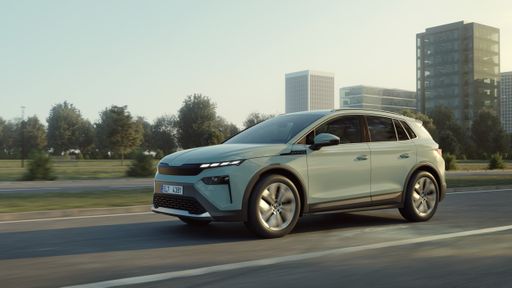 @ Škoda Auto a.s. / Škoda Storyboard
@ Škoda Auto a.s. / Škoda Storyboard
Skoda Elroq
VW Golf
The VW Golf remains the everyman’s favourite — cleverly balanced, composed and just posh enough to feel grown-up without pretending to be something it’s not. It slips through town and eats up longer trips with a refined cabin, practical layout and a kindly, capable character that turns everyday driving into something a little bit special.
details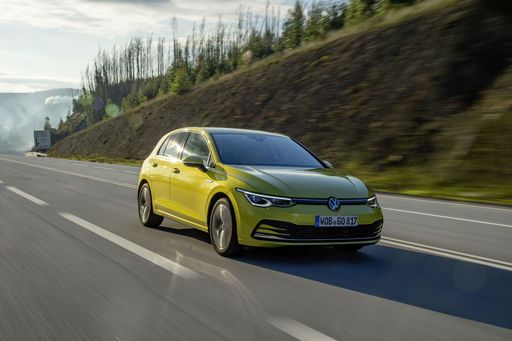 @ Volkswagen AG / VW Media
@ Volkswagen AG / VW Media
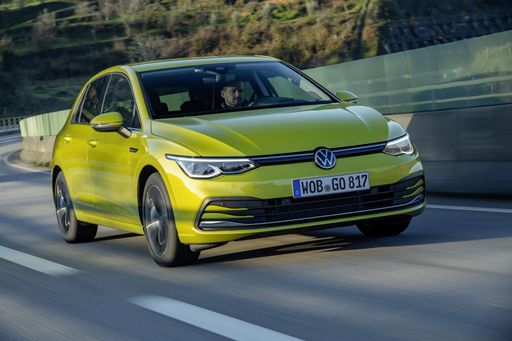 @ Volkswagen AG / VW Media
@ Volkswagen AG / VW Media
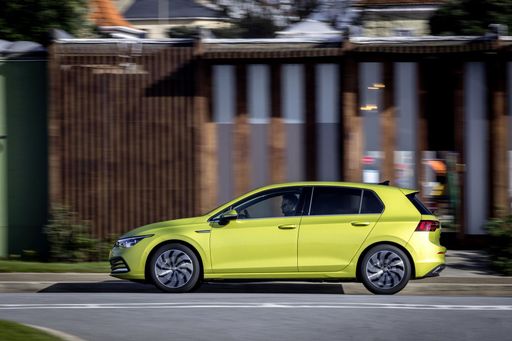 @ Volkswagen AG / VW Media
@ Volkswagen AG / VW Media
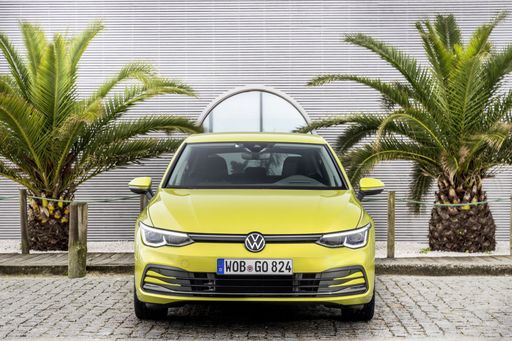 @ Volkswagen AG / VW Media
@ Volkswagen AG / VW Media
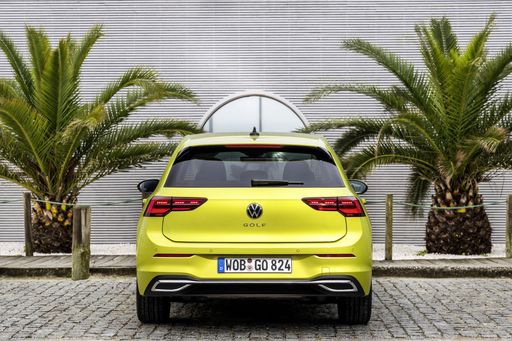 @ Volkswagen AG / VW Media
@ Volkswagen AG / VW Media
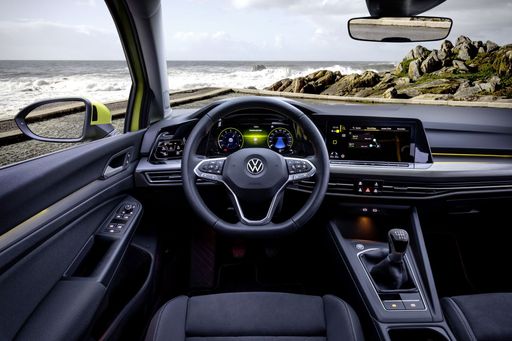 @ Volkswagen AG / VW Media
@ Volkswagen AG / VW Media
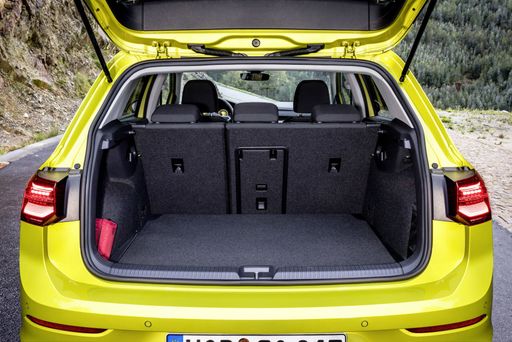 @ Volkswagen AG / VW Media
@ Volkswagen AG / VW Media
Skoda Elroq
The Skoda Elroq is a cleverly packaged family SUV that mixes roomy practicality with sharp, modern looks, making it an easy pick for buyers who prefer common sense over flash. On the road it's composed and user-friendly, with thoughtful interior details that turn everyday driving into something pleasantly efficient — a sensible companion with a wink.
details @ Škoda Auto a.s. / Škoda Storyboard
@ Škoda Auto a.s. / Škoda Storyboard
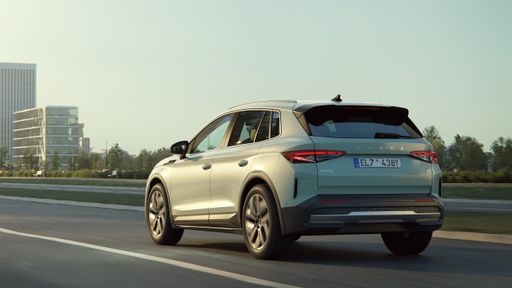 @ Škoda Auto a.s. / Škoda Storyboard
@ Škoda Auto a.s. / Škoda Storyboard
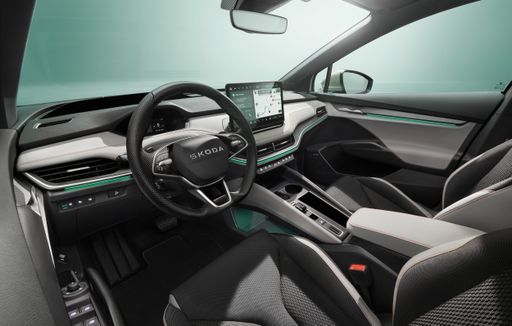 @ Škoda Auto a.s. / Škoda Storyboard
@ Škoda Auto a.s. / Škoda Storyboard
 @ Volkswagen AG / VW Media
@ Volkswagen AG / VW Media
|
 @ Škoda Auto a.s. / Škoda Storyboard
@ Škoda Auto a.s. / Škoda Storyboard
|
|
|
|
Costs and Consumption |
|
|---|---|
|
Price
25200 - 47600 £
|
Price
29100 - 45500 £
|
|
Consumption L/100km
1.1 - 8.1 L
|
Consumption L/100km
-
|
|
Consumption kWh/100km
-
|
Consumption kWh/100km
15.2 - 16.5 kWh
|
|
Electric Range
131 - 143 km
|
Electric Range
377 - 573 km
|
|
Battery Capacity
19.70 kWh
|
Battery Capacity
52 - 79 kWh
|
|
co2
25 - 184 g/km
|
co2
0 g/km
|
|
Fuel tank capacity
40 - 55 L
|
Fuel tank capacity
-
|
Dimensions and Body |
|
|---|---|
|
Body Type
Hatchback
|
Body Type
SUV
|
|
Seats
5
|
Seats
5
|
|
Doors
5
|
Doors
5
|
|
Curb weight
1307 - 1662 kg
|
Curb weight
1953 - 2268 kg
|
|
Trunk capacity
273 - 381 L
|
Trunk capacity
470 L
|
|
Length
4282 - 4296 mm
|
Length
4488 mm
|
|
Width
1789 mm
|
Width
1884 mm
|
|
Height
1454 - 1483 mm
|
Height
1608 - 1625 mm
|
|
Max trunk capacity
1129 - 1237 L
|
Max trunk capacity
1580 L
|
|
Payload
438 - 508 kg
|
Payload
470 - 531 kg
|
Engine and Performance |
|
|---|---|
|
Engine Type
Petrol MHEV, Petrol, Diesel, Plugin Hybrid
|
Engine Type
Electric
|
|
Transmission
Automatic, Manuel
|
Transmission
Automatic
|
|
Transmission Detail
Dual-Clutch Automatic, Manual Gearbox
|
Transmission Detail
Reduction Gearbox
|
|
Drive Type
Front-Wheel Drive, All-Wheel Drive
|
Drive Type
Rear-Wheel Drive, All-Wheel Drive
|
|
Power HP
116 - 333 HP
|
Power HP
170 - 340 HP
|
|
Acceleration 0-100km/h
4.6 - 10.2 s
|
Acceleration 0-100km/h
5.4 - 9 s
|
|
Max Speed
202 - 270 km/h
|
Max Speed
160 - 180 km/h
|
|
Torque
220 - 420 Nm
|
Torque
310 - 679 Nm
|
|
Number of Cylinders
4
|
Number of Cylinders
-
|
|
Power kW
85 - 245 kW
|
Power kW
125 - 250 kW
|
|
Engine capacity
1498 - 1984 cm3
|
Engine capacity
-
|
General |
|
|---|---|
|
Model Year
2024 - 2025
|
Model Year
2025
|
|
CO2 Efficiency Class
D, F, G, C, B
|
CO2 Efficiency Class
A
|
|
Brand
VW
|
Brand
Skoda
|
What drivetrain options does the VW Golf have?
The VW Golf is available as Front-Wheel Drive or All-Wheel Drive.
The prices and data displayed are estimates based on German list prices and may vary by country. This information is not legally binding.
